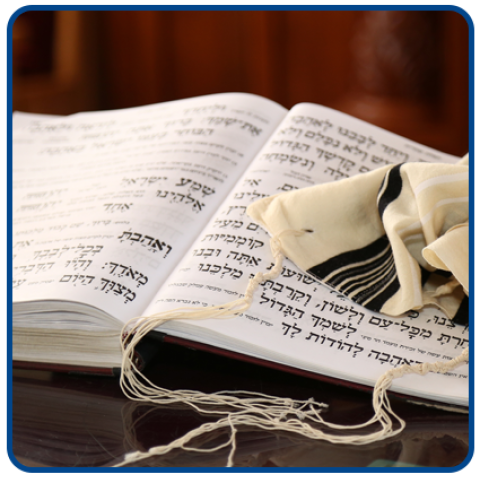While the history of Jewish Believers in Yeshua (Jesus) is nearly 2,000 years old – dating to Yeshua’s first disciples – the modern Messianic Jewish movement (also commonly called Messianic Judaism) is relatively young. The modern Messianic movement has evolved through five specific periods of recent history.
5 Eras of Jewish Faith in Yeshua
1. Formation
Before Yeshua’s death, His earthly ministry focused on Jewish people. He told the Canaanite woman that He “was sent only to the lost sheep of the house of Israel” (Matthew 15:21‒28). After His resurrection, He issued the Great Commission, commanding His disciples to take the Gospel into all the world (Matthew 28:16–20).
That message was confirmed in many ways throughout the book of Acts. Notable examples include when Peter was sent to Cornelius after a rooftop vision (Acts 10), and Phillip preached in Samaria and also explained the Scriptures to the Ethiopian (Acts 8). The Formation years of Jewish faith in Jesus extend from 33‒135 C.E., and the term Messianic Judaism would not be used for nearly 2,000 years.
2. Gentilization
As the Gospel was opened to the Gentiles and many came to believe in Yeshua, the question emerged of whether they were required to keep the Torah (Acts 15). This reveals that faith in Yeshua was considered a Jewish faith, not a new religion. By 135 C.E., a rift had grown between Jewish Believers and the rabbinical leaders of Judaism.
False notions sprung up that a Jewish person cannot believe in Yeshua, and if they do, they cannot remain Jewish. The Bar Kokhba Revolt furthered this division. The Roman Emperor Constantine severed the Christian Church’s connection with Judaism when he declared the Church officially divorced from the rites and practices of the Jewish people.
Successive centuries witnessed the progressive Gentilization of faith in Jesus. This period extends from 135 C.E. to about 1800 C.E., encompassing the Crusades and the Inquisition. During these violent episodes, Jewish people suffered intense persecution as politically powerful leaders of institutional Christianity” attempted to force them to renounce Judaism and “convert."
3. Jewish-Christian Renaissance
A resurgence of Jewish people coming to faith in Yeshua while retaining their Jewish identity occurred between 1800 and 1870 C.E. During this time, a number of individuals played essential roles in laying the groundwork for what would later become Messianic Judaism. Among these leaders was Joseph Rabinowitz, who founded the first Messianic Jewish congregation. There, Jewish Believers in Jesus could worship Him and freely maintain the practices of their Jewish heritage. The congregation, located in Kishinev, Moldova,* was called “Israelites of the New Covenant."
4. Hebrew Christianity
Alliances of Jewish Believers began to form around the world between 1870 and 1960 C.E. This was a significant change within the realm of Jewish Believers in that, as followers of Jesus, they met to continue to identify as “Hebrews.” The Hebrew Christian Alliance of Great Britain was established in 1866 and, in 1915, the Hebrew Christian Alliance of America was founded. The international Hebrew Christian Alliance began in 1925, including representation from 18 nations. The era of Hebrew Christianity opened the way for what we know today as Messianic Judaism.
5. Messianic Judaism
Messianic Judaism’s genesis is intertwined with the Jesus Movement of the 1960s. During that revival, many young people with strong, ethnically Jewish backgrounds came to faith in Yeshua. Societal changes of that time offered these young Jewish people the freedom to maintain their Jewish heritage and practices while embracing faith in Jesus as their promised Messiah. The attitude shifted from “We’re Christians who happen to be Hebrew,” to “We are Jews who believe in Jesus,” representing a new mindset that shaped the modern movement of Messianic Judaism.
Since 1960, many new Messianic Jewish congregations, organizations and ministries were formed, including what would become Jewish Voice Ministries International, originally founded under the name Jewish Voice Broadcasts by Louis Kaplan in 1967. During this time, hundreds of Messianic congregations were established around the world, including in Israel. Today, more than 350,000 Messianic Jews worship in their own congregations worldwide, with approximately 20,000 of those residing in Israel.
Messianic Judaism remains a relatively new movement. In less than 60 years, Messianic Judaism has emerged as a vital indicator of God’s ongoing work within and commitment to Israel and the Jewish people. As Messianic Jews and congregations remain identifiably Jewish, the world sees that God is not finished with the Jewish people yet, and that the Gentile Christian Church has not replaced Israel. Messianic Judaism is drawing the world’s attention to the essential role of Israel – both the Land and her people – in God’s End-Time plans.
*More than 100 years after Joseph Rabinowitz established the first Messianic congregation, Jewish Voice Ministries’ Jonathan Bernis, at the time leading a Festival of Jewish Music & Dance in the same city of Kishinev, Moldova. Approximately half of the 40,000 people in attendance – an estimated 20,000 – came to faith in Messiah Yeshua.











